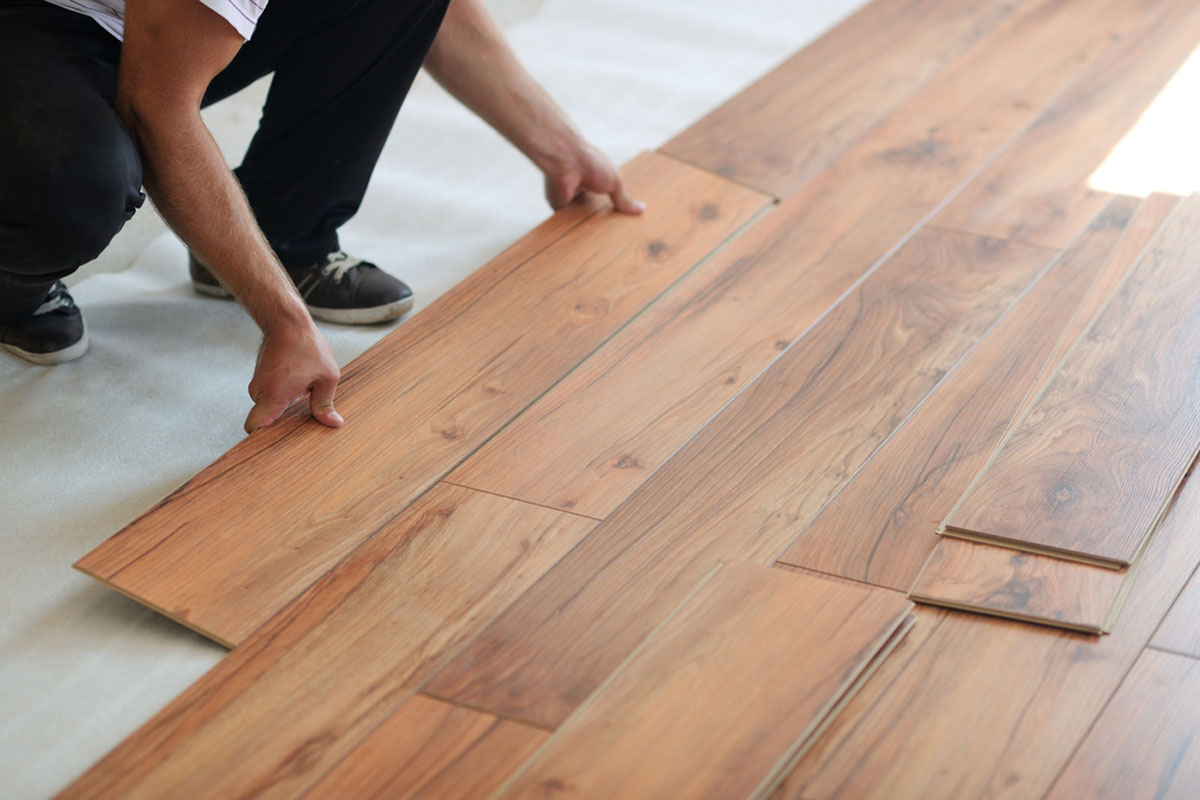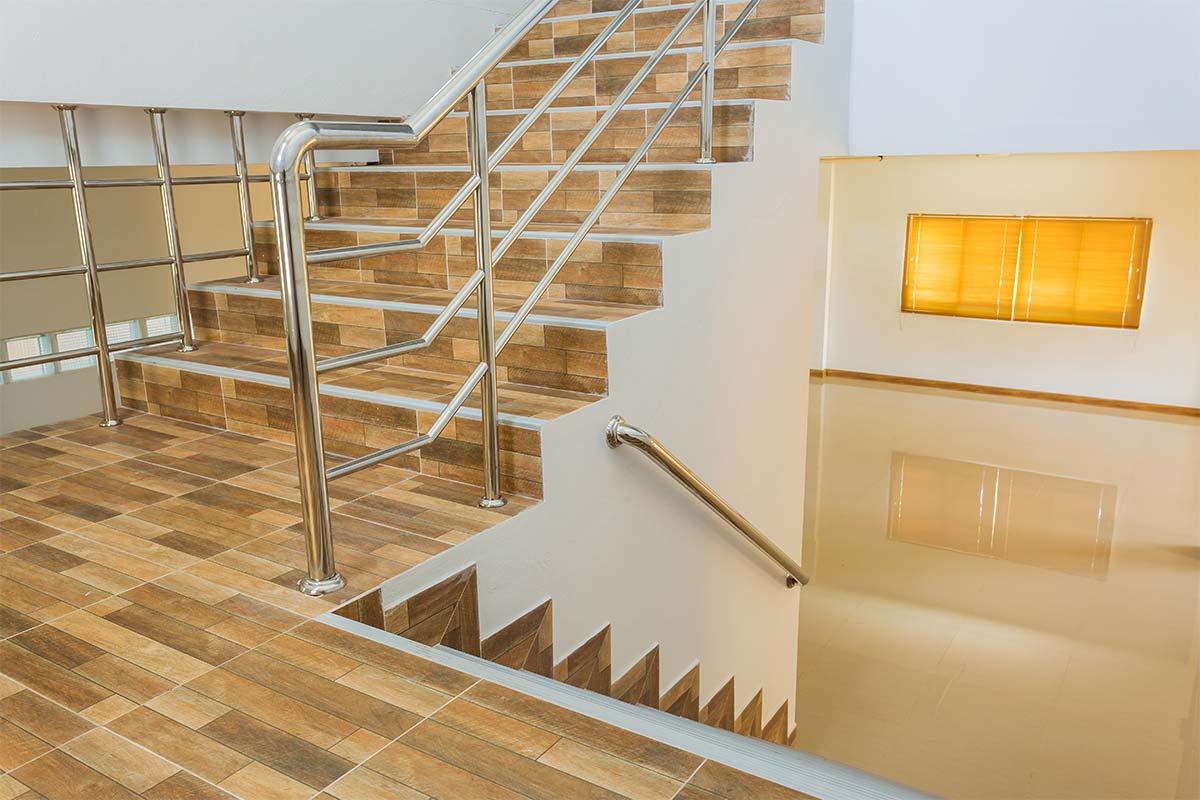You may be considering what to do with the stair if you’re like many homeowners choosing luxury vinyl tiles vs. ceramic tiles for their affordability, outstanding durability, authentic wood looks, and simple installation. LVT may be laid on steps, and the result is a magnificent tile floor that is cleaner than carpet and has a consistent aesthetic. Additionally, it withstands the frequent use that staircases receive well.
But prior to LVT, stair installations needed a lot of preparation, including many measurements, cutting, and fitting. Unfortunately, the final appearance wasn’t always so slick.
Today, there is a simpler fix thanks to MSI’s ready-to-install stair materials. These finishing elements, which range from stair treads to stair noses, are offered in the Cyrus, Prescott, and XL Cyrus series. Continue reading to find out more about how to install stairs that appear professional.

STAIR PIECES, LVT
You should avoid using the incorrect stair pieces because there are a few different ones that may be used for installing vinyl plank flooring. Installing stair treads or stair noses is perfect since they give the stairs a finished appearance and flush feel, as opposed to planks with trim pieces that pair cut vinyl tiles with raised edges, which are unsightly and uncomfortable to walk on with your toes and balls of your feet.
There are no cracks or gaps on the stairs since stair treads completely cover the top layer of each step. These sturdy parts eliminate the need for stair noses and speed up the installation process. These smaller sections are used to complete a step, for example, at the top of a landing or level where the stair nose will meet the remainder of the floating-click or glue-down LVT.
The open staircase in this magnificent mudroom, which has only one handrail and no spindles, increases the space in the space while showing how smooth the Finely stair noses are. Thankfully, the delicate gray and greige tones from the Cyrus series come in matching stair and trim pieces, which would otherwise be challenging to match.

White risers versus LVT risers
The next design choice is whether to continue using LVT risers or contrast your wood with white risers. It truly comes down to your preference, whether you want something that maintains the wood look or splits it up because both are appropriate for various home design types.
For example, as you can see in the installation of this stairway, the homeowners decided to extend the weathered Ryder premium vinyl planks along the risers to give the staircase a solid wood appearance. Warm beige and brown hues, coupled with dark knots and graining, amplify the features of real salvaged wood and produce a flowing, svelte design. Stair noses and planks were employed for the installation because Ryder from the Cyrus series doesn’t have stair treads.
But with the addition of the Braly stair treads in this foyer, the sharp contrast between the dark browns and the dazzling whites extends onto the staircase. Rich reddish-brown tones with heavier knots and graining characterize these high-end vinyl planks from the Prescott line, which are exquisitely complemented by white risers.
Installing luxury vinyl tile is simple, even for do-it-yourselfers, which is one of its many advantages. To begin with, determine whether the protruding bullnose on the stairs needs to be cut or if it may be tucked beneath the stair treads or stair noses. Once that’s done, if you have matching risers built, you should start at the bottom of the stairs and work your way up; otherwise, you can put the stair treads anywhere you’d like.

Use a riser or a plank to start, and make sure it is the right height. If you decide to use an LVT riser, cut the vinyl piece to the appropriate size and remove the click-locking mechanism. After quickly sanding the underside, flip the riser or plank over and apply adhesive in strips spaced about 6 inches apart to the underside. Place the riser in position and secure it with painter’s tape.
The stair tread should then be measured to see whether it has to be trimmed for depth or length. After giving it a light sanding and removing the painter’s tape from the riser, glue should be applied to the steps in strips spaced about 6 inches apart, and the stair tread should be pressed firmly into place.
Check the height measurements for the remaining risers to determine what cuts are required. Keep in mind that, unlike the first one, these will be sitting on top of the stair treads. The parts should be as flush as possible. After that, proceed with installing the risers and treads as described.
Remember to utilize a flush stair nose rather than a stair tread when you reach a landing or the top of the stairs. This is so that it may be connected to the rest of the luxury vinyl tile, where this shorter piece will be put into place.
Take a stair nose for steps with returns, then miter the edge on one or both sides at a 45-degree angle. After that, miter a second piece so it may fit flat against the first stair nose. Offset the planks’ and noses’ floating-click mechanisms. The plank and the mitered noses should then be glued down so that everything lays flush.

This stair installation has a polished return edge, as you can see, but the angles aren’t at a 45-degree angle. As opposed to that, they finish the open border of the staircase where the warmer-toned spindles wonderfully contrast with the Fauna LVT, a lighter-brown vinyl with dark brown knots and graining for an authentic wood look from MSI’s Prescott collection.
One of its best features is the ability to utilize luxury vinyl tile on any level, including the stairs. The landing will be revitalized, and the planks will remain uniform throughout the home if LVT flooring is extended up the stairway.
In addition to the ease of installation and straightforward care and upkeep required for vinyl flooring, having the appropriate finishing components has a significant positive impact on the project and lends it a polished appearance. The vinyl flooring installation procedure will go considerably more smoothly and easily if MSI’s LVT stair components are used.











Your comment submitted.